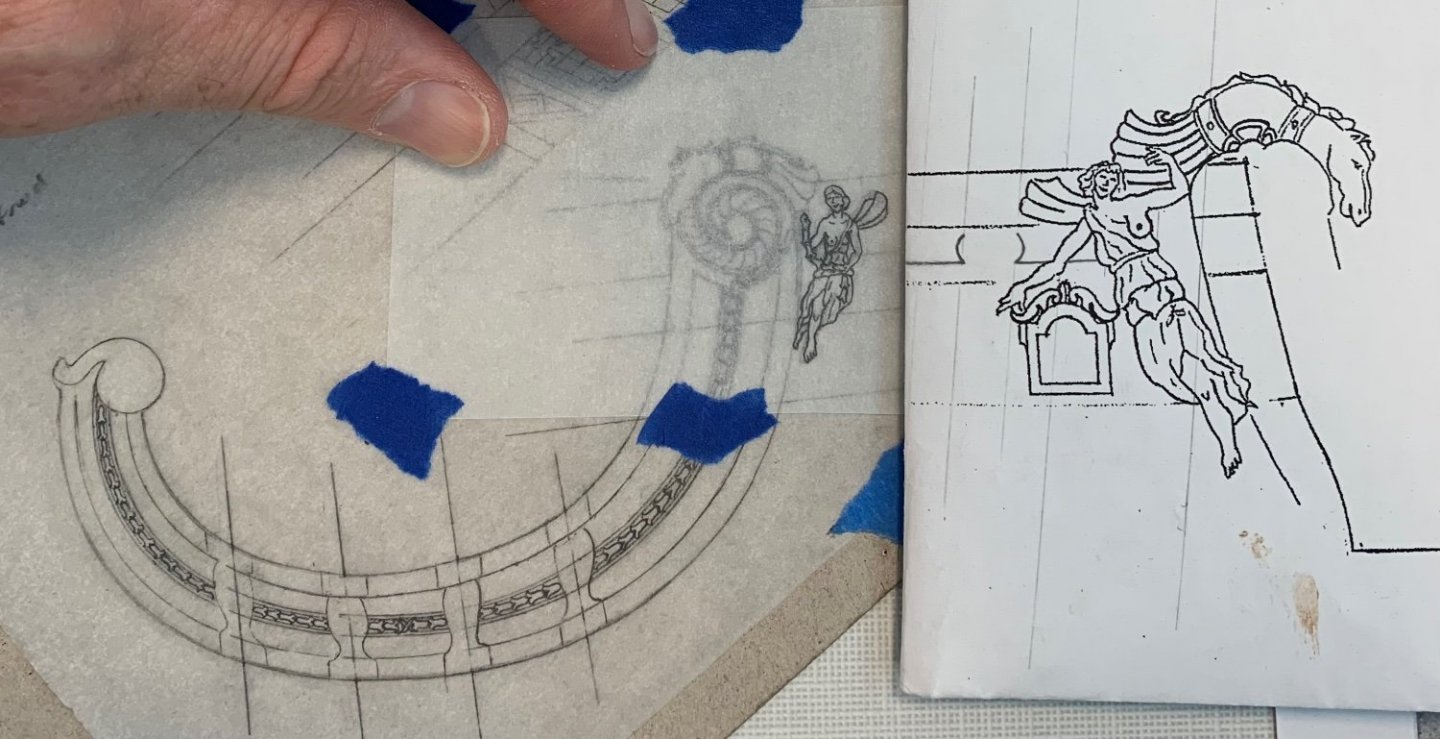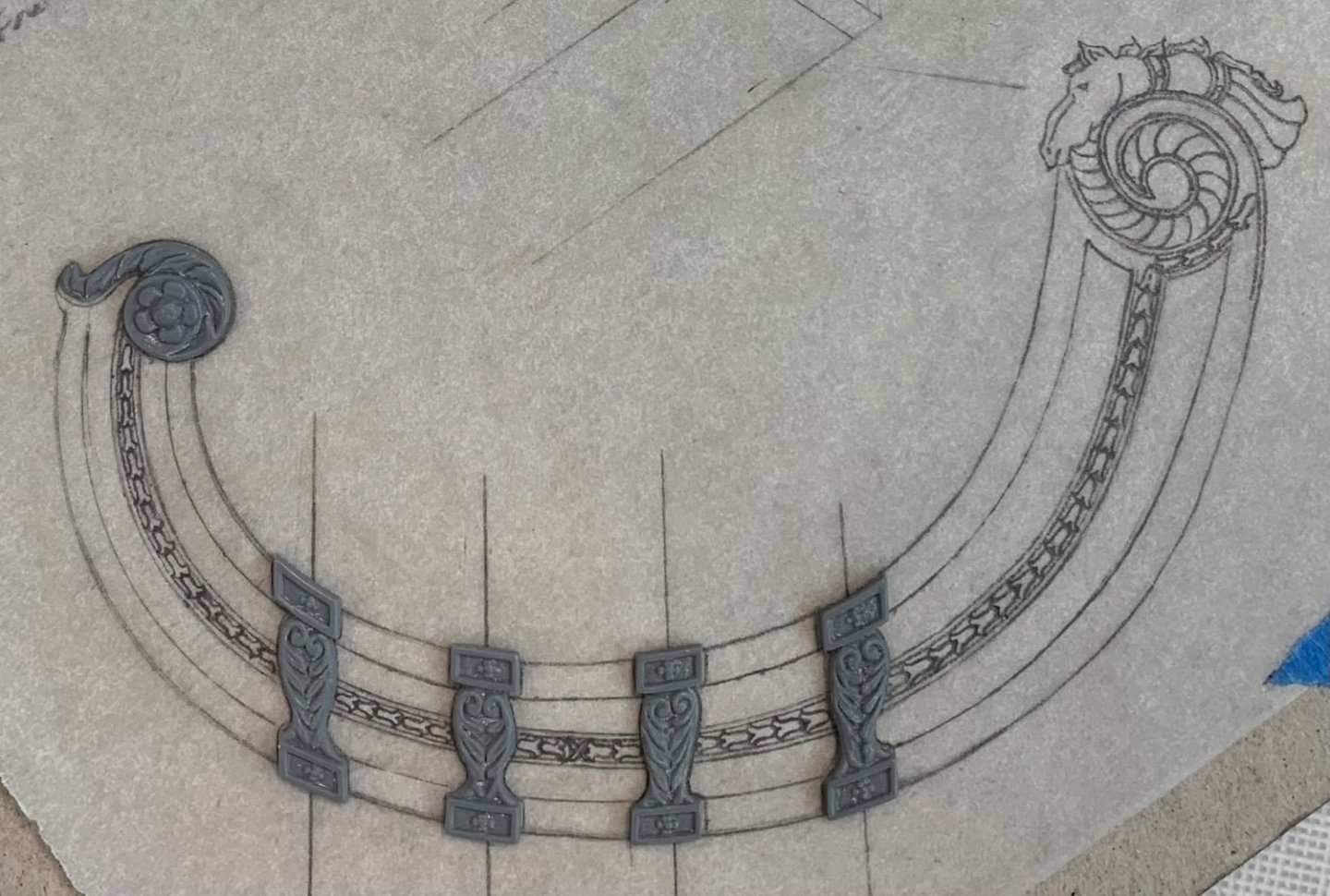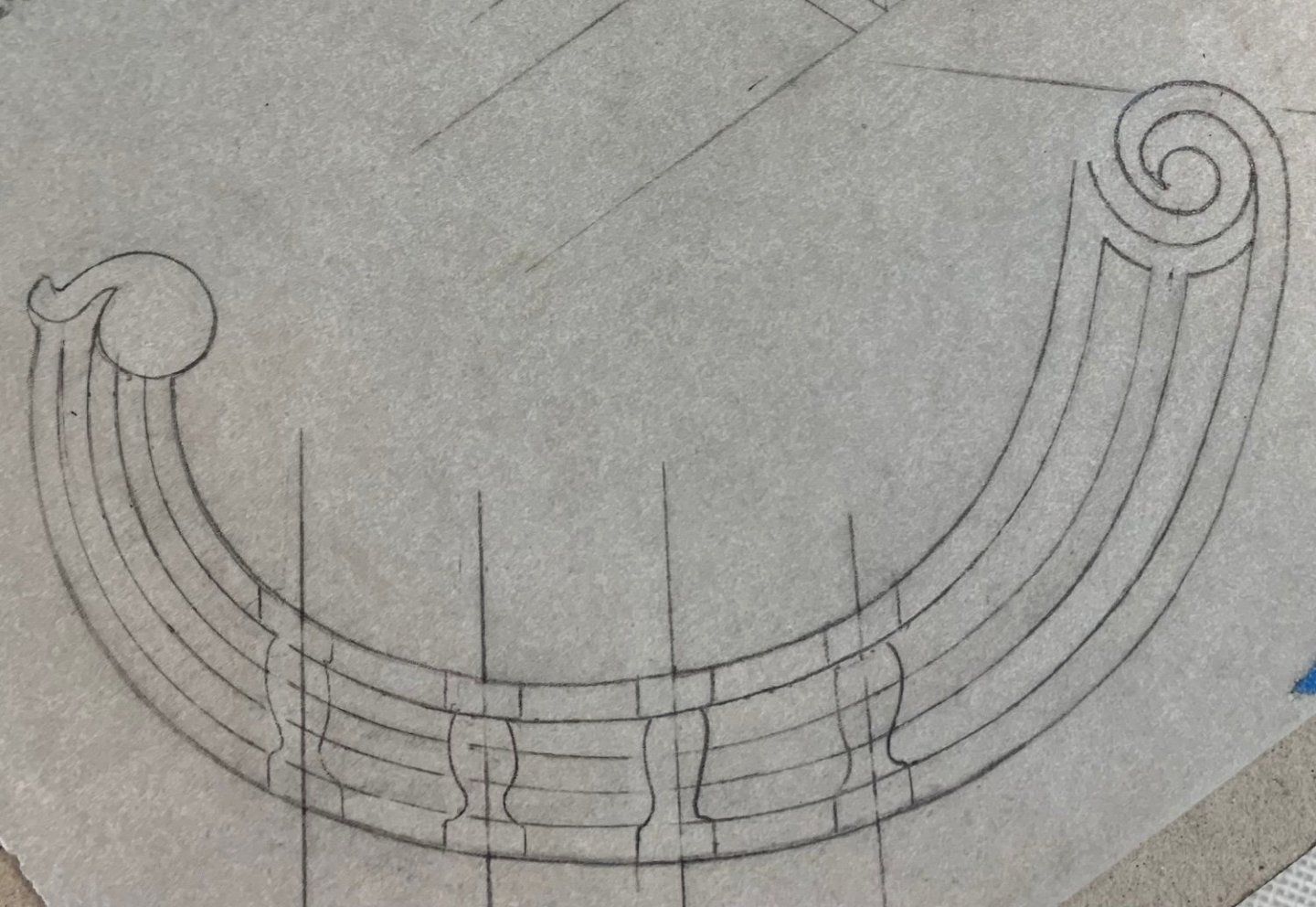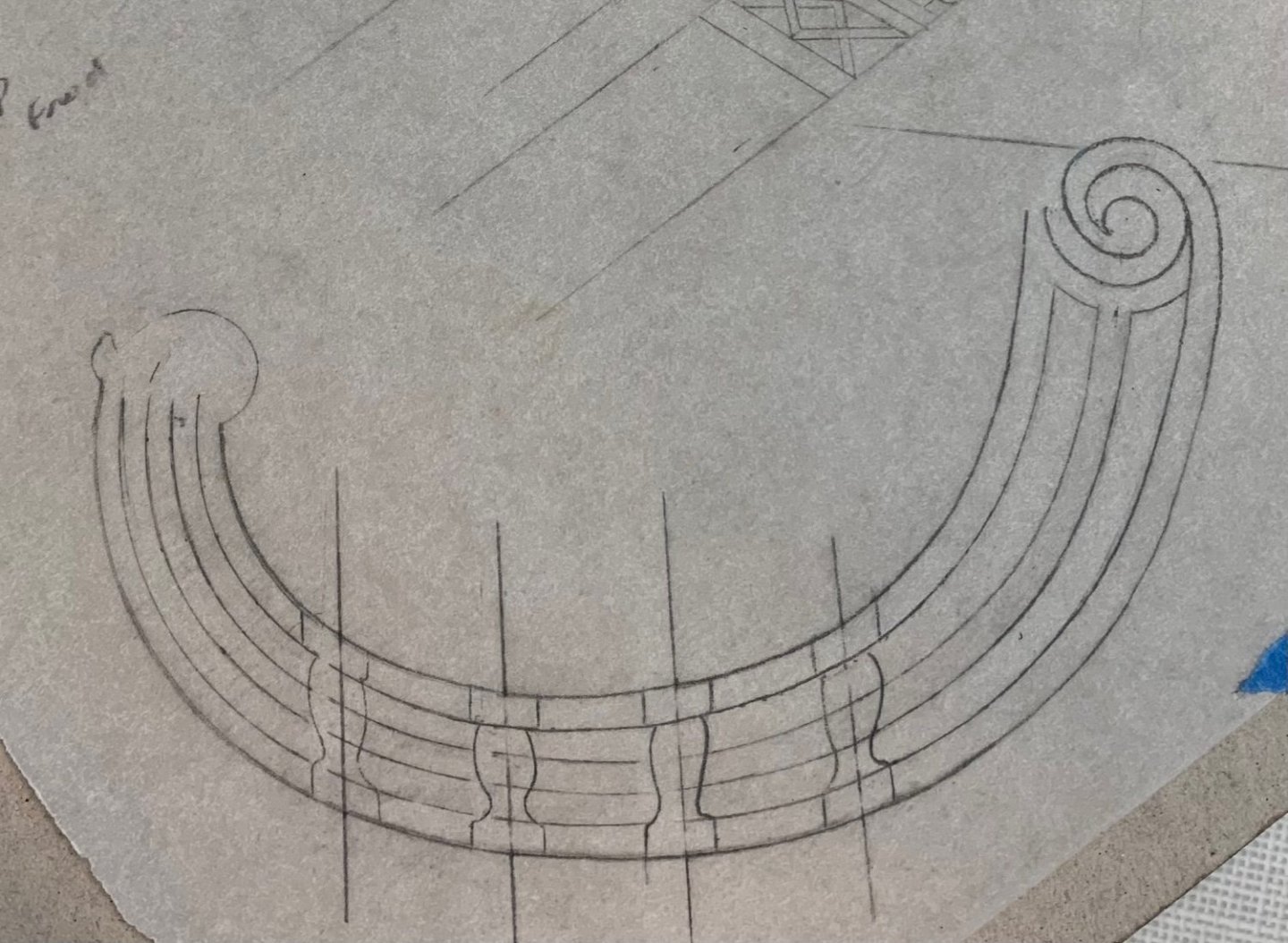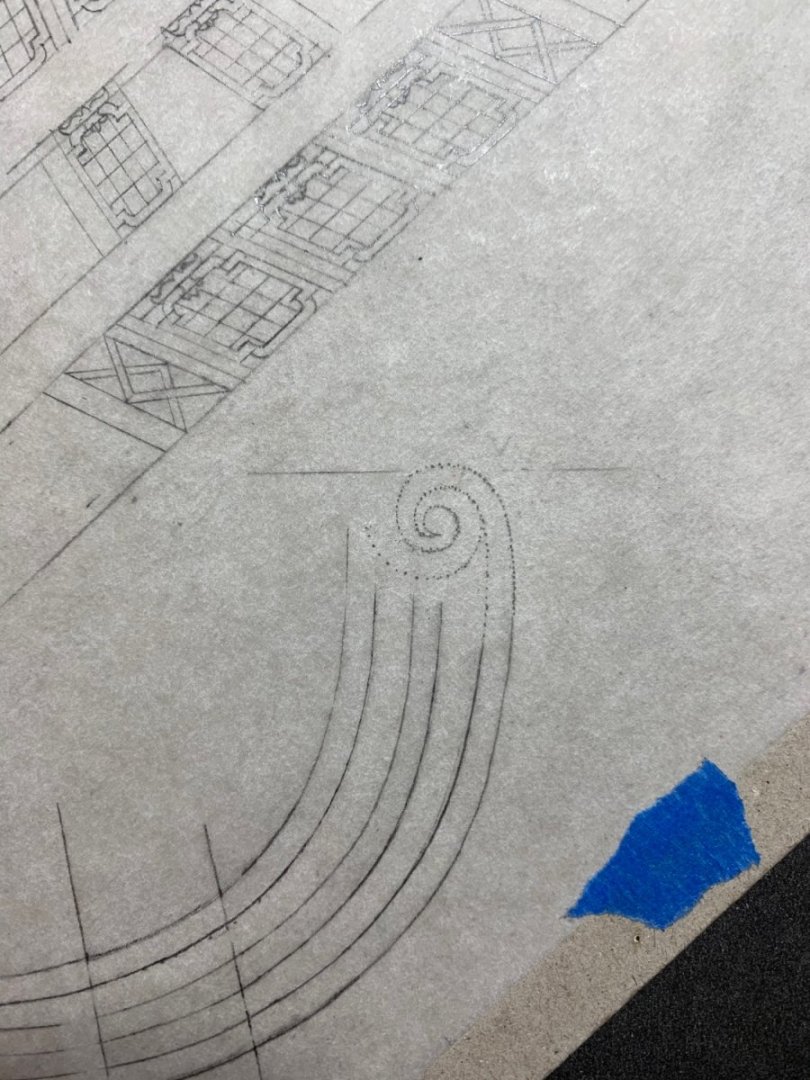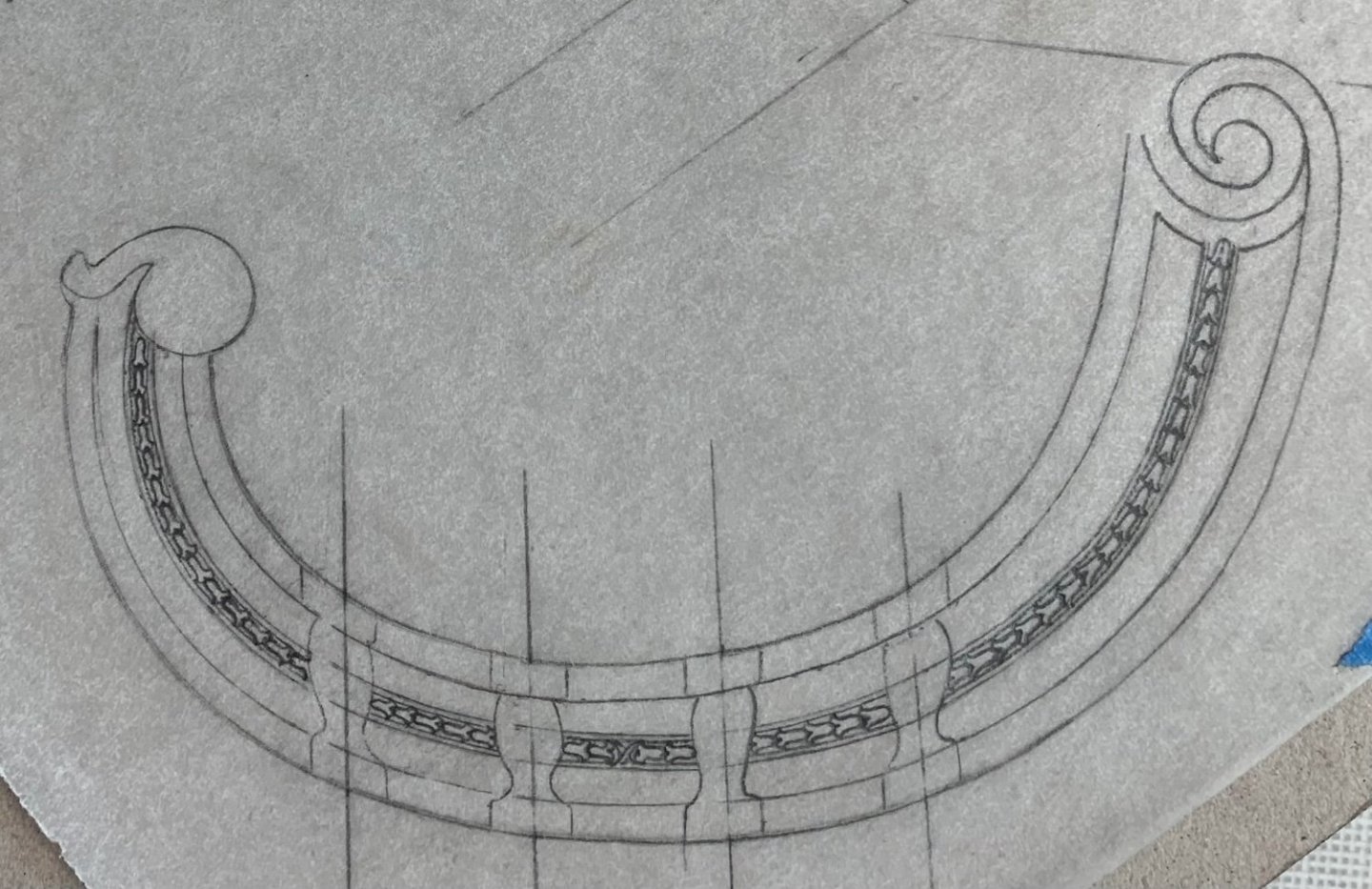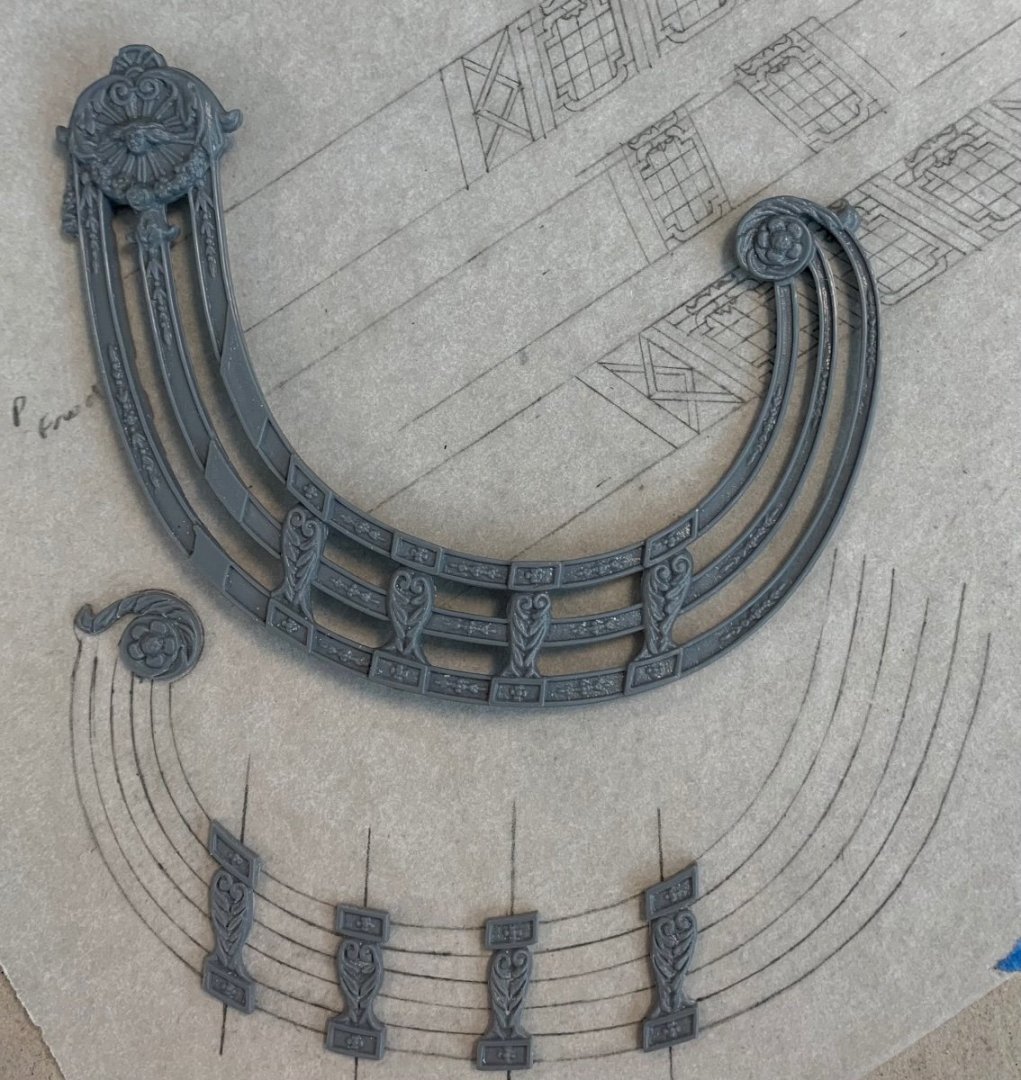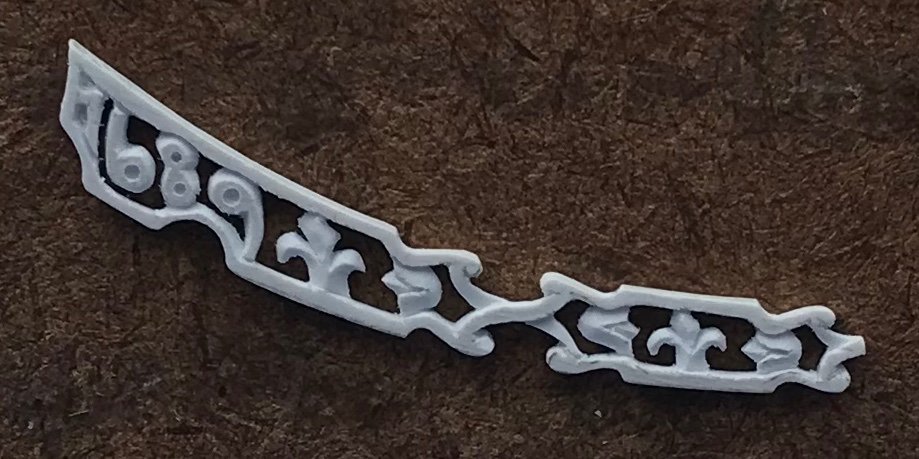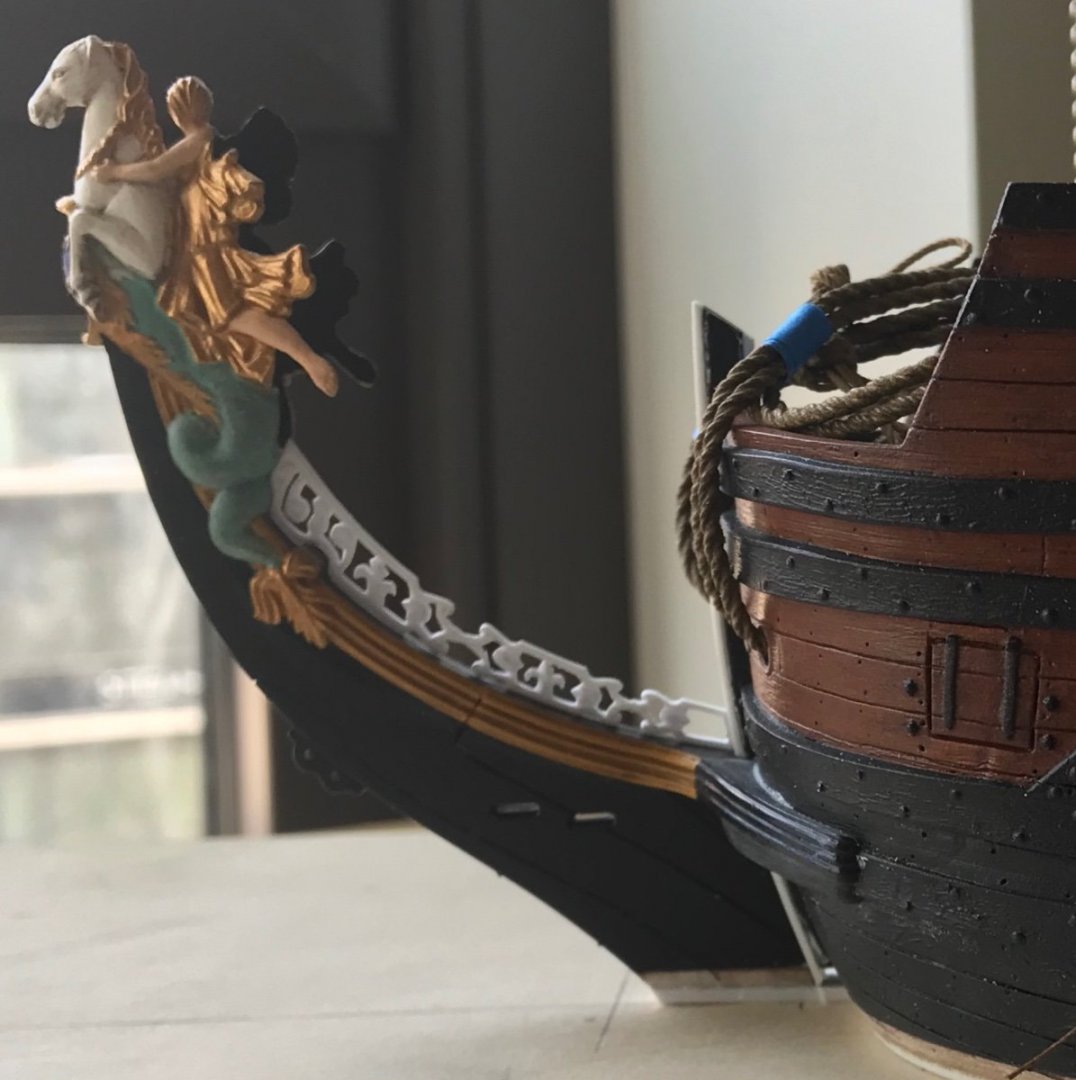-
Posts
2,946 -
Joined
-
Last visited
Content Type
Profiles
Forums
Gallery
Events
Everything posted by Hubac's Historian
-
As always, Frank, beautiful and patient execution. Personally, I’d be inclined toward simple circle coils, but I’d make them off-model in a form, so that I could induce a drooping shape with dilute PVA.
- 510 replies
-
- reale de france
- corel
-
(and 1 more)
Tagged with:
-

Soleil Royal 1/72 - Artesania Latina Ref.22904
Hubac's Historian replied to modeller_masa's topic in Wood ship model kits
I am not permitted to specifically reference the builder or forum, however, one builder has undertaken a "re-engineering" of the "Artesania Latina Soleil Royal" that shows exactly what is possible with this kit. And let me tell you - it is surprising! Out of the box, on the other hand, there are nuuuuuuuumerous problems with this kit. It's chief benefit is the fact that the bulkheads, as drawn, are actually pretty faithful to a first-rate of the period. The ornamentation, particularly of the stern, is very good - far better than anything yet produced (apart from Heller, which copies Tanneron directly). Overall, the kit more closely resembles Michel Saunier's model of SR. I am a proponent - and since I know they are paying attention to this forum, at least - of AL doing a re-design of their own release. IT COULD BE SO MUCH BETTER. It should be so much better. Do it better, AL! People pay a lot of money for these kits. -
I don’t mean to be a thorn on your vacation, Bill. I just think you might have second thoughts, once all the yards were up on the model, if you were to proceed with these particular wooden blocks.
-
I think it is a matter of relative and proportional size. Attached to the mastheads, the blocks seem less girthy. The yards are relatively narrow, though. I think, if you reduced these blocks to the next size down they would look right. Or, maybe try the printed blocks. If they are the ones that Kevin made, they will be proportional, overall.
-
Hi Bill, before you get too far into it, I would like to gently encourage you to re-consider the scale of your yard blocks. They appear considerably too heavy for their respective applications.
-
Hello Thomas, Of all these kinds of reliefs I’ve made for the model, I did a pretty thorough review of my relief process for the amortisement mermaids. Beginning with the post cited above (post#1218, page 41) I go through the entire process, and discuss the particular tools that I use to get there. The beauty of styrene, as opposed to wood, is that you really don’t need many knives to get really good results. You will see each of these discussed in the subsequent posts, but I essentially use two Exacto blades - one more accute than the other - a hooked chip-carving knife, a short and shallow sweep gouge, and a fine veiner. That’s basically it.
- 2,444 replies
-
- heller
- soleil royal
-
(and 9 more)
Tagged with:
-
I took measurements off of the model, and transferred them to my drawing, which I had sprayed with hairspray to fix the graphite before proceeding with the pixie figure. I expected to be erasing a lot, and I was correct! Unfortunately, the hairspray altered the “tooth” of the paper, and I just could not draw clean lines, so I taped an overlay for the pixie. This was helpful, in revising my earlier attempt because I could re-plot elements I wanted to maintain, while making spatial assessments of what needed to be changed. It took a while to get the proportions of her limbs where I wanted them. You can see, in comparison with the drawing I made at the start of this project, how scaled-down the horse and pixie now are: I am satisfied with all of this, so tonight I will paste a photocopy to a blank of 1/16” styrene sheet, and I will begin making the port headrails. The horse figure will be integral to the headrails, while the pixie will be a separate part. I expect each headrail side to take a couple of weeks to make, but this is an enjoyable and portable side-project. As always, thank you for the likes and for looking-in. More to follow!
- 2,444 replies
-
- heller
- soleil royal
-
(and 9 more)
Tagged with:
-
Or, is the “funky seat” that bulges out from the starboard beakhead railing? I’m not positive, but I think that may be a pissdale for quick relief.
- 1,784 replies
-
- winchelsea
- Syren Ship Model Company
-
(and 1 more)
Tagged with:
-
The design process continues. After checking against the model, I realized after all, that I would have to shift the front three pilasters aft by about 1/16”. Now the gammoning will pass cleanly between the ‘thwartship supporting timbers. I took this opportunity to mark the cardboard template for the height of the aft rosette. In doing so, it dawned on me that I could do exactly as Druxey suggested, and make additional room space beneath the headrails. His annoying😜 voice kept rattling around my brain, as I kept thinking to myself “you know he’s right!”. In the end, it was a simple matter of lifting the aft rosette until I was satisfied with the spacing. Now that I had determined to copy the Berain design more closely, I did a little more refining of the rail widths, and then set about drawing the aft, scrolled rosette; it is simple-seeming enough, but I spent hours trying to draw this volute. My pointillist-mapping technique for drawing irregular curves looks like this, just before I trace over the dotted line: I thought this looked pretty good until the next day, when I realized that the volute should be as closely centered on the middle rail as possible. More hours were spent drawing and erasing: This was much better, however, the scroll within the scroll needed a little re-balancing, especially in consideration of the way in which the horse’s snout nestles into this open area: Okay, now I could start penciling in only the necessary mouldings to help me determine the size of the bellflower garland: I am making small alterations to Berain’s design, as I see sensible and/or necessary; in the original drawing the garland runs all in one direction, aftwards. I have decided to make a transition between the second and third pilasters, so that half the garland runs forward toward the reins of the figurehead. Here is where the drawing stands, as of now: At this stage, I can photocopy this drawing and paste a copy to my cardboard template, so that I can take precise measurements of where my pixie figure will fit-in without the whole thing looking un-balanced. Drawing all of this, is one matter. Figuring out how exactly to apply my layered approach to part-making so that there is the appropriate sense of relief and overlay will take some thought. If that weren’t enough, the headrails bow out, around the beakhead grating, and then reverse inward to tuck-in behind the figurehead. I don’t think heat-bending is the way to go, here. I will, instead, induce these curves over a form, over a period of a few days. I hope everyone has a happy and safe holiday weekend! More to follow…
- 2,444 replies
-
- heller
- soleil royal
-
(and 9 more)
Tagged with:
-

Roter Löwe 1597 by Ondras71
Hubac's Historian replied to Ondras71's topic in - Build logs for subjects built 1501 - 1750
You have been quite busy, Ondras, since I last checked-in. All of the work is superb, but your cannons are very finely detailed and finished. I really admire your metal skills! -
Thank you Wefalck and John! I also often wonder at the immense effort at making the ships functional and “pretty” again, after battle. There are a number of highly detailed VdV grisaille drawings that attest to the carnage. That is, in large part, what draws me to this period, and particularly to the French; these ships were floating cathedrals and/or castles upon the sea. The best and most exuberant sculptural artists of France were employed to decorate these ships (and the cathedrals and palaces) - each of them knowing exactly how ephemeral their creations were. That there was an intrinsic willingness of the crown to replace and repair such losses is, frankly incredible to me.
- 2,444 replies
-
- heller
- soleil royal
-
(and 9 more)
Tagged with:
-
Thank you, Ian! Yes, my argument is that such an enormous surface area as the figurehead would not have been fully gilt, by this point in the 17th C. After trying a few different schemes, I discovered that I really liked this grey wash over the white of the horse. There is something reminiscent of ancient marble, in its appearance, and I have decided that the flesh areas of the four seasons figures will receive the same treatment. While I am sure that some observers of this project take silent issue with aspects of my color scheme, which is their right, of course, oftentimes these stylized choices are intended to highlight the remarkable beauty of Tanneron’s sculpture work. The grey wash, for example, really picks out the finely molded facial features of all of the figures in a way that doesn’t translate as clearly through gold paint. In fact, the colors I have chosen are color-coded to specific features of the ship in a way that delineates the many layers of detail and ornament that are present on the model. Whether the actual SR was quite so vivid I can not say. I suspect, though, that there was a more extensive use of color than previously believed.
- 2,444 replies
-
- heller
- soleil royal
-
(and 9 more)
Tagged with:
-
Personally, I know I can always rely on David, in particular, to know what everything’s name is. He has increased my vocabulary tremendously, these past five years.
- 2,444 replies
-
- heller
- soleil royal
-
(and 9 more)
Tagged with:
-
I’ve completed and am in the process of painting the stern archway brackets. The channel standards are coming along, slowly, after a little excise and replacement. I have continued to tweak and play around with my new headrail design. The bottom rail width still requires a little tweaking, but the symmetry and taper are already an improvement over the stock rails. Here are the carved elements that I can definitely recycle: When I re-incorporate stock carvings, I like to undercut the carvings with the tip of a #11 blade, in order to give a better sense of relief; the idea is similar to the process of metal chasing brass castings, for example. The carvings end up looking crisper, overall, and it is an easy thing to achieve with backward scrapes of the blade point, heal first. The pilasters have been re-spaced. I wanted them to neatly correspond with either the fleurs of the Xs of the trailboard, but the abbreviated design of the trailboard made that an impossibility. It just occurred to me, as a matter of fact, that I will have to re-check my tentative pilaster layout to ensure that it does not intersect with the run of the gammoning. On the stock kit, this consideration is moot because there are no ‘thwartship supporting timbers that the gammoning must pass between. Here, though, those supports will align with the pilasters. I have decided that I will design the aft medallion to closely follow the Berain drawing. The stock medallion is nice, but it interferes with the horse and pixie sculptures in ways that are un-tennable. As always, thank you for your interest and for looking in.
- 2,444 replies
-
- heller
- soleil royal
-
(and 9 more)
Tagged with:
-
I'm sure Cutty had mousetraps, i.e. scale kitties. Everyone loves a good ship-cat, especially in England where the figurehead of choice was almost always the King cat.
- 443 replies
-
- Cutty Sark
- Revell
-
(and 2 more)
Tagged with:
-
I think that this is what I find so interesting about Kevin’s work. He has found a way to make a much better mouse-trap that is worth his time and attention. The choices of where to use or upgrade kit components offers a tremendous freedom to a creative mind.
- 443 replies
-
- Cutty Sark
- Revell
-
(and 2 more)
Tagged with:
-
Fascinating article, Shipman. I believe today’s tech opens the door for new and exciting modeling subjects that may just spark the interest of the younger generations. My generation (X) was probably one of the last where plastic model-making was still a common thing for young boys. Gen Y, less so, and after that - model-making becomes very niche, among specialty outlets like WarHammer, where there’s a strategy game connected to the hobby. My kids watch me pour all kinds of time into my projects. My son has made one plane and started a car, but he isn’t drawn to it as we were at the same age (10). Perhaps the new path is something akin to what Kevin is doing, where the young people learn to design their own models on the computer and print them into assemblies of their own engineering. I like to believe there will always be something intrinsically appealing about models, and that people will always find the interest to continue making them.
- 443 replies
-
- Cutty Sark
- Revell
-
(and 2 more)
Tagged with:
-
Thank you for the kind words of encouragement, Cap’n Steve, and for taking the time to look-in!
- 2,444 replies
-
- heller
- soleil royal
-
(and 9 more)
Tagged with:
-
There is certainly the issue that Henry raised, which I wasn’t even considering. My trepidation with raising the steeve of the the bowsprit has to do with a cap block that I glued to the middle deck to receive the end of the bowsprit. This block is made of poplar, which is the same stuff I made the dummy carriage blocks from. The idea of drilling blind, through the beakhead bulkhead into two dissimilar materials (wood and plastic), where the existing entry hole overlaps with the new hole center, just makes me queasy. There are numerous opportunities for this to go very wrong, and the reward just isn’t worth the risk for me. I thought I still had pictures of this block, but amazingly I do not.
- 2,444 replies
-
- heller
- soleil royal
-
(and 9 more)
Tagged with:
-
I’ll have to search through sold old pics, Dan, to find the problem that you literally can’t see, anymore. I’ll be back in a bit.
- 2,444 replies
-
- heller
- soleil royal
-
(and 9 more)
Tagged with:
About us
Modelshipworld - Advancing Ship Modeling through Research
SSL Secured
Your security is important for us so this Website is SSL-Secured
NRG Mailing Address
Nautical Research Guild
237 South Lincoln Street
Westmont IL, 60559-1917
Model Ship World ® and the MSW logo are Registered Trademarks, and belong to the Nautical Research Guild (United States Patent and Trademark Office: No. 6,929,264 & No. 6,929,274, registered Dec. 20, 2022)
Helpful Links
About the NRG
If you enjoy building ship models that are historically accurate as well as beautiful, then The Nautical Research Guild (NRG) is just right for you.
The Guild is a non-profit educational organization whose mission is to “Advance Ship Modeling Through Research”. We provide support to our members in their efforts to raise the quality of their model ships.
The Nautical Research Guild has published our world-renowned quarterly magazine, The Nautical Research Journal, since 1955. The pages of the Journal are full of articles by accomplished ship modelers who show you how they create those exquisite details on their models, and by maritime historians who show you the correct details to build. The Journal is available in both print and digital editions. Go to the NRG web site (www.thenrg.org) to download a complimentary digital copy of the Journal. The NRG also publishes plan sets, books and compilations of back issues of the Journal and the former Ships in Scale and Model Ship Builder magazines.




